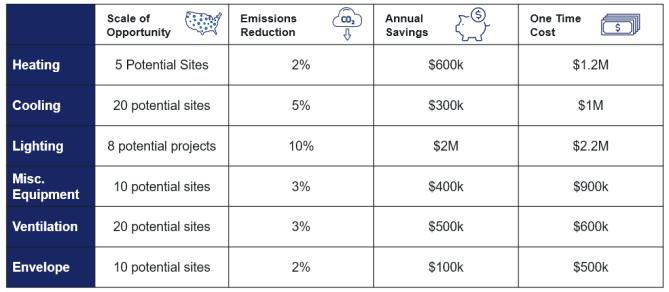




Results & Compliance Pathways
BPS Report & Compliance Roadmap
• Site list review
• Initial data collection
• Data completeness check
• Data alignment and questions
• Apply regulations and requirements to portfolio
• Recommend and verify Compliance Pathways with client
• Safety and onsite procedure discussions
• Preliminary site analysis and prioritization
• Site visit scheduling and execution with facilities team
• Review data collected onsite
• Perform opportunity analysis and calculations
• Analyze compliance status and potential pathways in each applicable jurisdiction
• Prepare onsite audit report
• Prepare BPS Compliance Roadmap
• Submit documentation to jurisdictions
• Present final summary
Compliance with immediate requirements, including an on-site energy audit, submission of audit report, and additional documentation where required
Actionable roadmap to compliance with relevant building performance target
In this step, ENGIE Impact will collect and request relevant available data about each site, review, and confirm compliance requirements
• Review site list and confirm scope
• Stakeholder alignment
• Initial data collection according to checklist
• Data completeness check
• Apply regulations and requirements to portfolio to determine actions and documentation needed at each site
✓ Two Years Monthly Utility data
✓ Facility attributes (size, age, remodel dates)
✓ Two years production, utilization, occupancy, traffic, etc
✓ Facility Plan and MEP As-built Drawings
✓ Equipment inventories/Asset Lists
✓ CapEx project lists / plans (identified, in-progress, approved, planned)
✓ Vendor proposals for unimplemented / hold projects
✓ Portfolio growth / contraction forecasts (acquisitions or divestments)
✓ Information on Existing Building Energy Management System
✓ Existing onsite renewable data
✓ Details of recently completed efficiency and or on-site generation projects
✓ List of key stakeholders and contact information
✓ Financial hurdle rates / investment requirements
✓ Growth plans of the business (divestment, acquisitions, new markets)
✓ Purchasing/Efficiency standards
✓ Relevant risk assessment and mitigation strategies
A qualified ENGIE Impact auditor will facilitate an ASHRAE Level 2 audit at each site as outlined in ASHRAE Standard 211-2018
Process
Detailed energy survey analysis
• Perform a whole building survey
• Examine major energy and water utilization systems and equipment
• Interview on-site staff to understand operating procedures
• Analyze utility bills over a longer timeframe to understand seasonal variations and energy patterns
Energy breakdown
• Breakdown of energy consumption by end-use (lighting, HVAC, etc.) in detail to highlight areas with the most significant savings potential
Identification and financial analysis of measures
• Propose energy conservation measures (ECMs) and cost savings opportunities
• Estimate cost-effectiveness and financial payback period of proposed improvements
Actionable recommendations
• The audit provides the foundation for a clear roadmap for improvement, outlining specific ECMs like upgrading equipment, improving building envelope performance, and optimizing operational practices
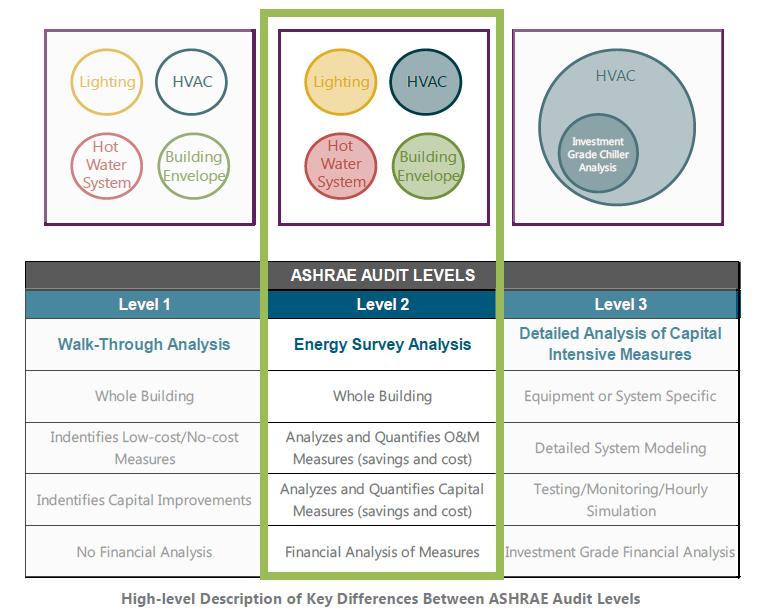
• Schedules and setpoints
• Maintenance schedules
HVAC
• Equipment replacement
• BAS (if applicable)
• IndoorAir Quality/COVID changes
• Schedules and controls
Lighting
• Replacement guidelines
• Leveraging daylighting techniques



Building
Envelope
Specialty Equipment
• Entrances and exits
• Windows
• Roofs
• Insulation
General
• Studio equipment
• Plugload controls
• Kitchen equipment
• Start up and shut down
• Hot water
• Irrigation control



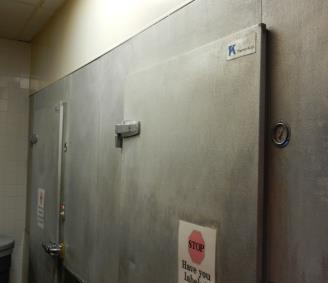

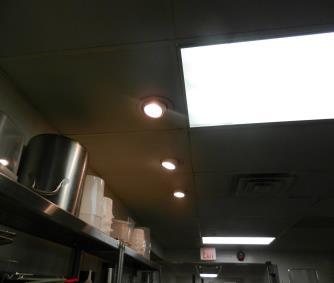
Compile data and observations for each site
• Consolidate notes and request additional information as needed
• Generate an end-use breakdown to understand drivers of energy use
• Review existing conditions of all equipment
• Calculate energy, carbon, and cost savings potential
• Identify energy conservation measures (ECM) and estimate cost and payback
Analyze compliance status and potential compliance pathways
• Examine current state energy performance versus the target for the relevant jurisdiction
• Analyze and recommend a compliance pathway for each site
• Estimate penalties from noncompliance
Output
• Initial audit report
• Compliance pathway recommendation and selection
Fig. 1: Energy conservation measure example

2: Capital project example
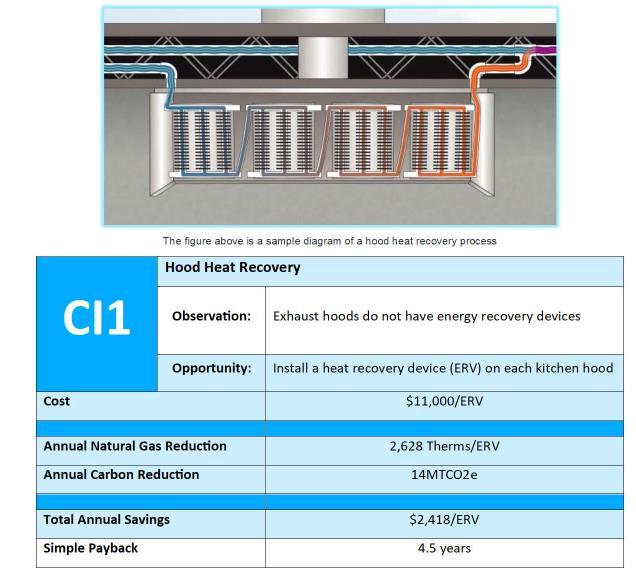
ENGIE Impact will produce necessary documents to submit to the jurisdiction and a summary of all sites visited
Develop site-level audit report and additional documentation as required
• Prepare audit report including described in previous step
• Energy conservation measure calculation and descriptions
• Recommended project prioritization and capital planning based on individual building’s target
• Prepare any additional documentation as required by the jurisdiction
• Submit all required documentation to jurisdiction
Develop final portfolio summary report for sites visited
• Develop report summarizing findings at a portfolio or jurisdiction level, recommended phased project prioritization and capital planning
• Submit to Client only
Output
• Submittal of initial BPS or energy audit requirements as per the jurisdiction, which can include the energy audit, supplemental documentation, compliance roadmap, compliance pathway selection, etc.
• Overview of portfolio performance, recommendations for highest priority focus areas to achieve compliance and maximize investment

